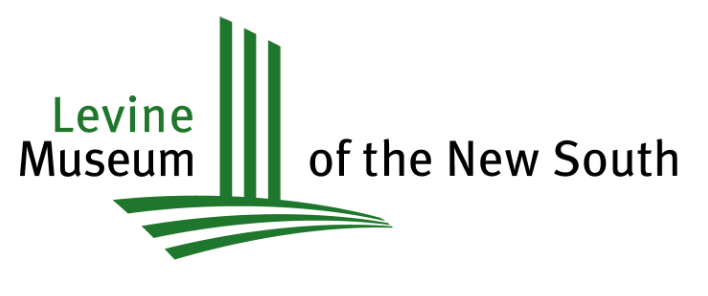This primary source was written in 1709 and uses the written language and spelling of the time. Due to length and unfamiliar words, it has been edited to make the text accessible. In addition, it was written from the point of view of an Englishman in the 1700s, and at times uses the words “Savages” and “Indians” to refer to the Native American peoples of North Carolina.
“On December 28, 1700, Lawson – with a party of five Englishmen and various Indian guides picked up along the way – set out on a brave journey through the wastes of Carolina. Following the Santee and Wateree Rivers through southern Carolina, Lawson’s party met with members of several Native American tribes in the region, including the Santee, Congaree, Wateree, and Waxhaw Indians.
In late January 1701, the Lawson expedition crossed into what is now North Carolina in the neighborhood of present-day Charlotte. More tribes were encountered – including the “Esaws,” Sugaree, and Catawba Indians – and the explorers resumed their journey along the famous Trading Path. This trade route stretched north and eastward through the interior of the province.” (From North Carolina History Project)
Excerpt 1:
As we went up the River, we heard a great Noise, as if two Parties were engag’d against each other, seeming exactly like small Shot. When we approach’d nearer the Place, we found it to be some Sewee Indians firing the Canes Swamps, which drives out the Game, then taking their particular Stands, kill great Quantities of both Bear, Deer, Turkies, and what wild Creatures the Parts afford.
These Sewees have been formerly a large Nation, though now very much decreas’d since the English hath seated their Land, and all other Nations of Indians are observ’d to partake of the same Fate, where the Europeans come, the Indians being a People very apt to catch any Distemper (viral disease) they are afflicted withal; the Small-Pox has destroy’d many thousands of these Natives…
Excerpt 2 (Modified):
As to the Indians Food, it is of several sorts, which are as follows
Venison (deer)…Fish of all sorts…Bear and [Beaver]; Panther; Pole-cat; Wild-cat; Possum; Raccoon; Hares, and Squirrels…All wild Fruits that are [edible], some of which they dry and keep against Winter, as all sort of Fruits, and Peaches, which they dry, and make [Syrups], and Cakes, that are very pleasant, and a little tartish; young Wasps, when they are white in the Combs, before they can fly, this is esteemed a Dainty; All sorts of [Tortoise]; Shell-Fish, and Stingray, dry’d; Gourds; Melons; Cucumbers; Squashes; Pulse (seeds from legumes) of all sorts; Rockahomine Meal (grits), which is their Maiz, [parched] and pounded into Powder; Fowl of all sorts, that are eatable; Ground-Nuts, or wild Potato’s; Acorns and Acorn Oil; Wild-Bulls, Beef, Mutton; Pork, &c. from the English; Indian Corn, or Maiz, made into several sorts of Bread; Ears of Corn roasted in the Summer, or preserv’d against Winter.
Excerpt 3 (Modified):
When [they] go a hunting, they commonly go out in…beginning at the coming…of the Winter; that is, when the Leaves are fallen from the Trees, and are become dry. ‘Tis then they burn the Woods, by setting Fire to the Leaves, and wither’d Bent and Grass, which they do with a Match made of the black Moss that hangs on the Trees in Carolina, and is sometimes above six Foot long. This, when dead, becomes black, (tho’ of an Ash-Colour before) and will then hold Fire as well as the best Match we have in Europe. In Places, where this Moss is not found, (as towards the Mountains) they make Lintels of the Bark of Cypress beaten, which serve as well. Thus they go and fire the Woods for many Miles, and drive the Deer and other Game into small Necks of Land and Isthmus‘s, where they kill and destroy what they please.…Here it is, that they get their Complement of Deer-Skins and Furs to trade with the English, (the Deer-Skins being in Season in Winter, which is contrary to England.) …Of Turkeys they have abundance; especially, in Oak-Land, as most of it is, that lies any distance backwards…The [women beat their corn to make bread…you shall see four beating with long great Pestils (tool used to crush and grind) in a narrow wooden Mortar…They plant a great many sorts of Pulse, Part of which they eat green in the Summer, keeping great Quantities for their Winter-Store, which they carry along with them into the Hunting-Quarters, and eat them.
…They are not only good Hunters of the wild Beasts and Game of the Forest, but very expert in taking the Fish of the Rivers and Waters near which they inhabit, and are acquainted withal. Thus they that live a great way up the Rivers practise Striking Sturgeon and Rock-fish, or Bass, when they come up the Rivers to spawn; besides the vast Shoals of Sturgeon which they kill and take with Snares, as we do Pike in Europe. The Herrings in March and April run a great way up the Rivers and fresh Streams to spawn, where the Savages make great Wares, with Hedges that hinder their Passage only in the Middle, where an artificial Pound is made to take them in; so that they cannot return. This Method is in use all over the fresh Streams, to catch Trout and the other Species of Fish which those Parts afford. Their taking of Craw-fish is so pleasant, that I cannot pass it by without mention…At the time when they are on the Salts, and Sea Coasts, they have another Fishery, that is for a little Shell-fish, which those in England call Blackmoors Teeth….and take great Quantities of them, which they carry a great way into the main Land, to trade with the remote Indians, where they are of great Value;
_________________________________________________________________________________________
Citation: Lawson, John. Voyage to Carolina. London, 1709. Documenting The American South, https://docsouth.unc.edu/nc/lawson/lawson.html. Accessed 3 September 2023.
Questions
- What different resources did the Native Americans have according to John Lawson?
- What is one way the Native Americans altered the land and why did they do this?
- How have Native Americans been positively impacted by their interaction with English and other Native Americans? How have they been negatively impacted?
vocabulary
Pole-cats: several species of small mammals that most closely resemble ferrets; also a nickname for skunks in the United States
Isthmus: narrow strip of land with sea on either side, forming a link between two larger areas of land
Mortar: a bowl in which substances are ground into a powder-like consistency





